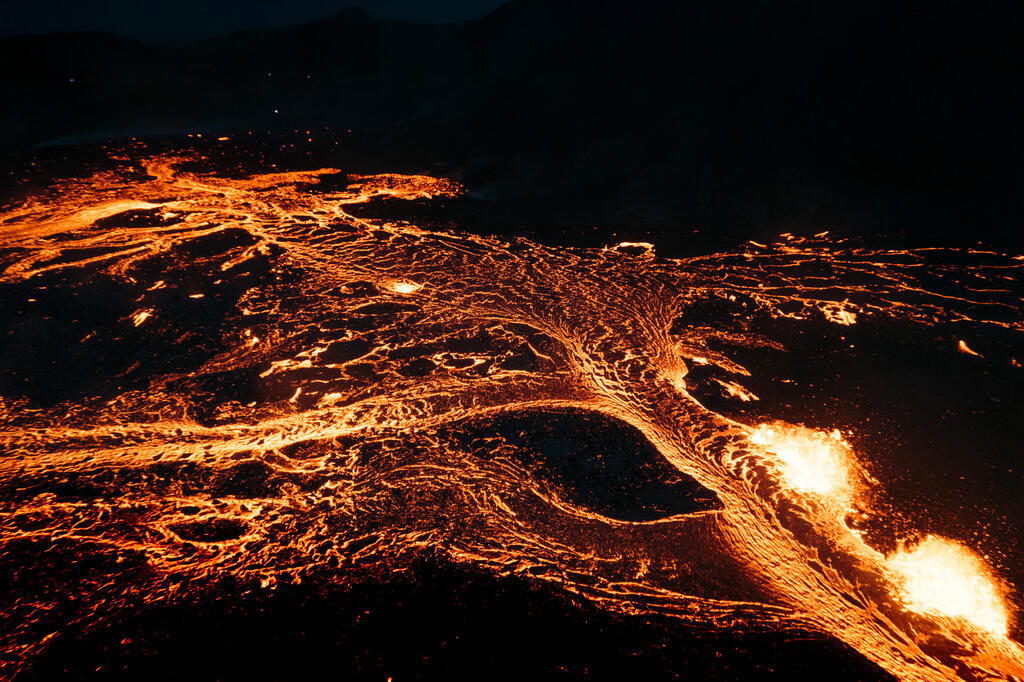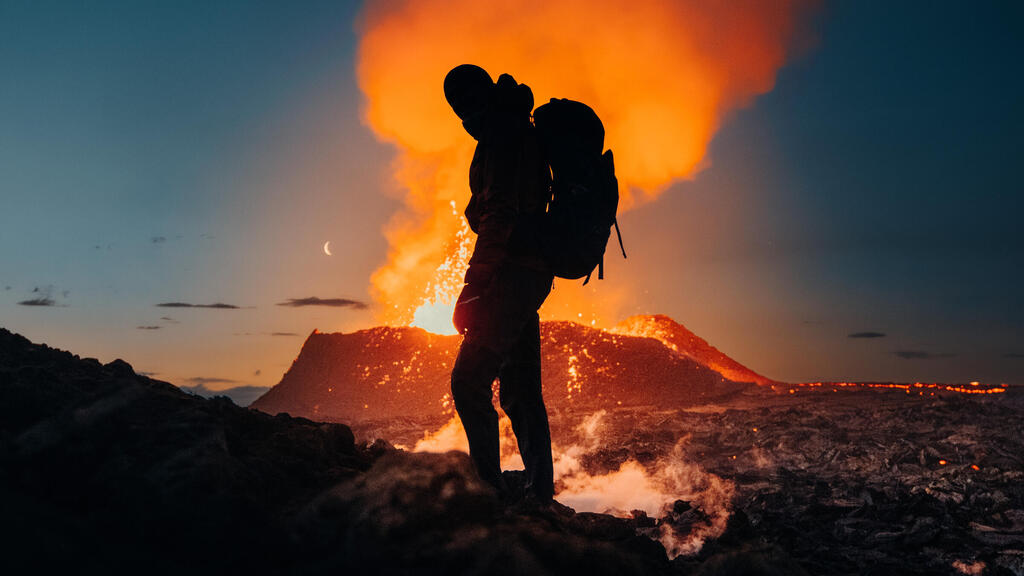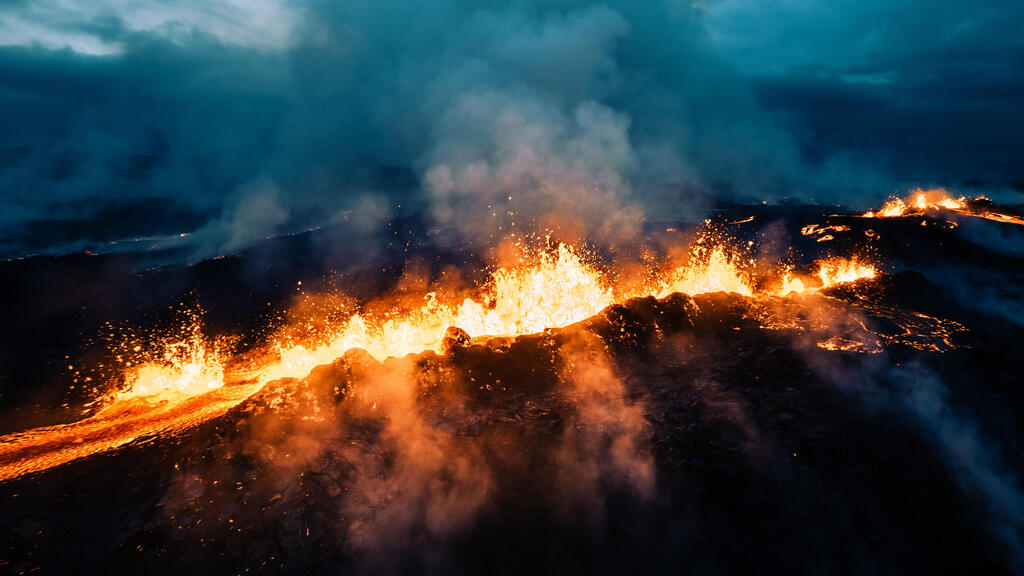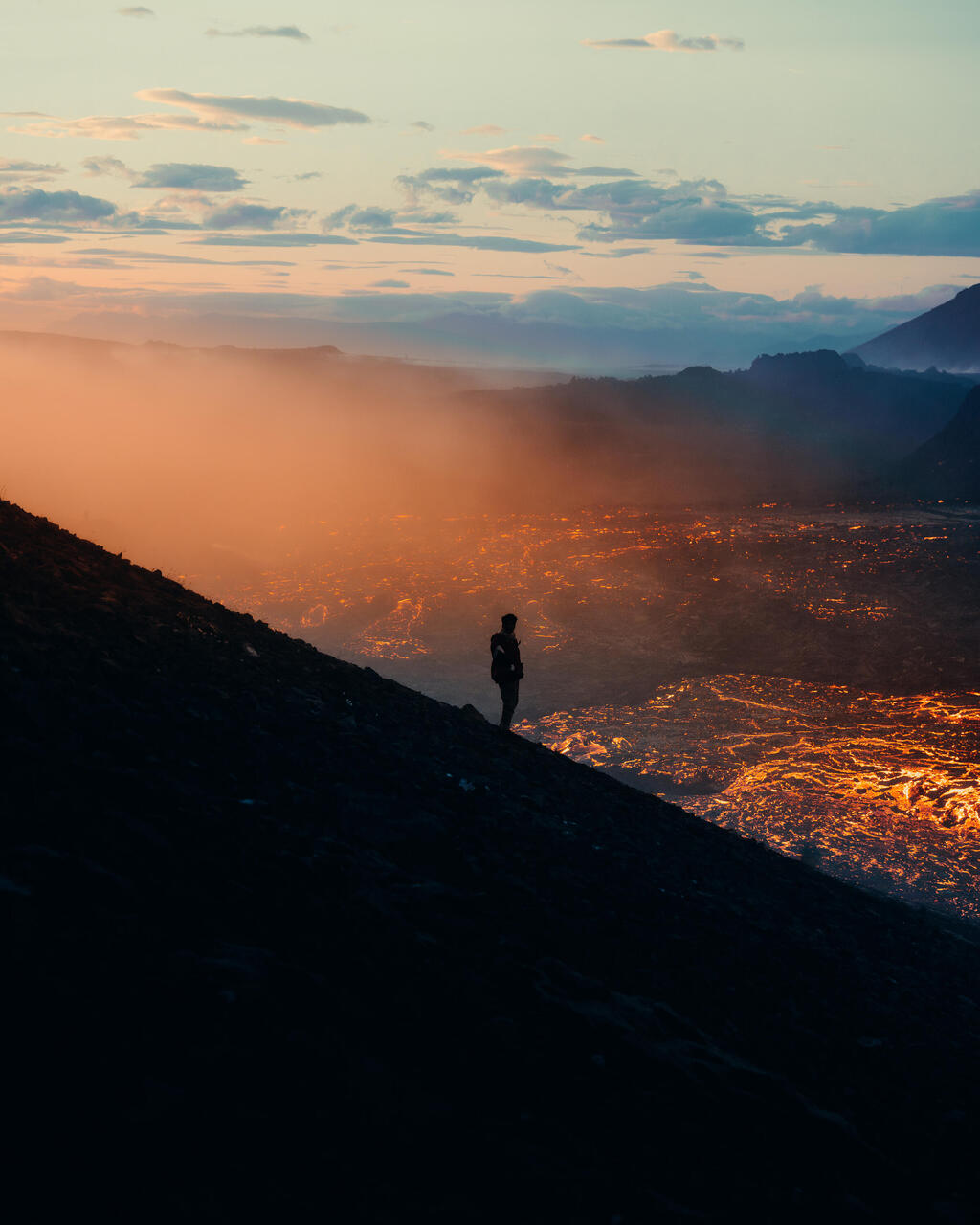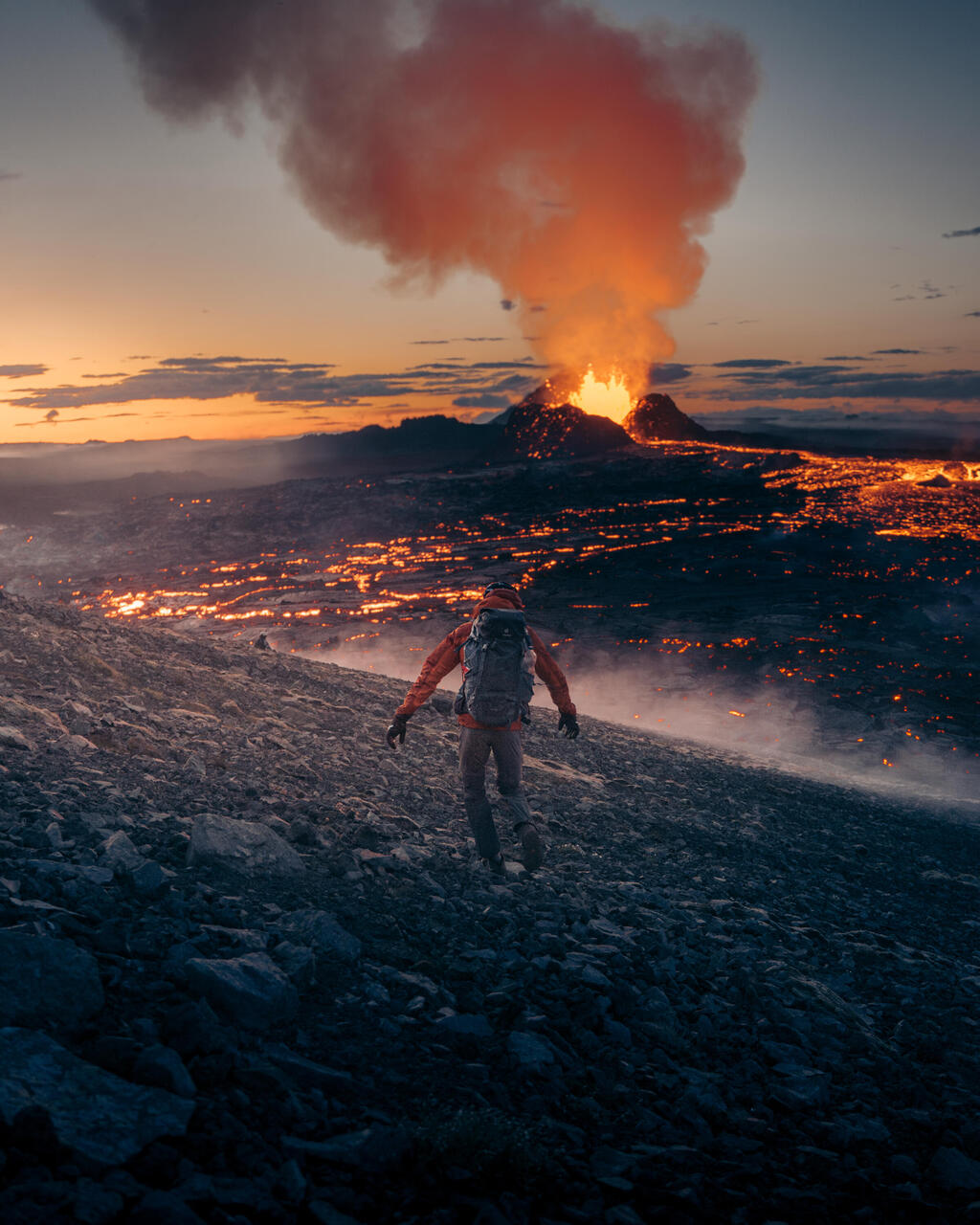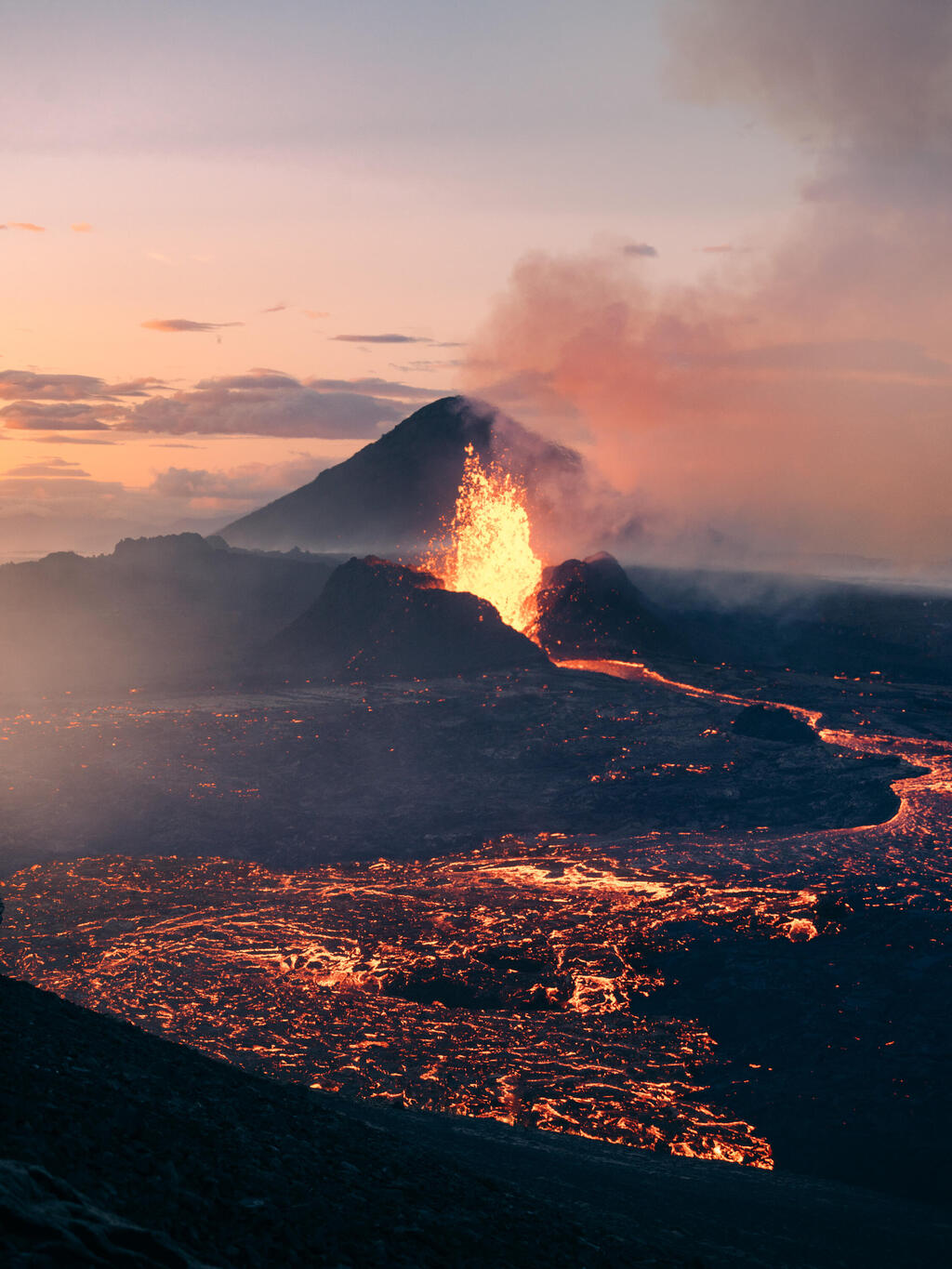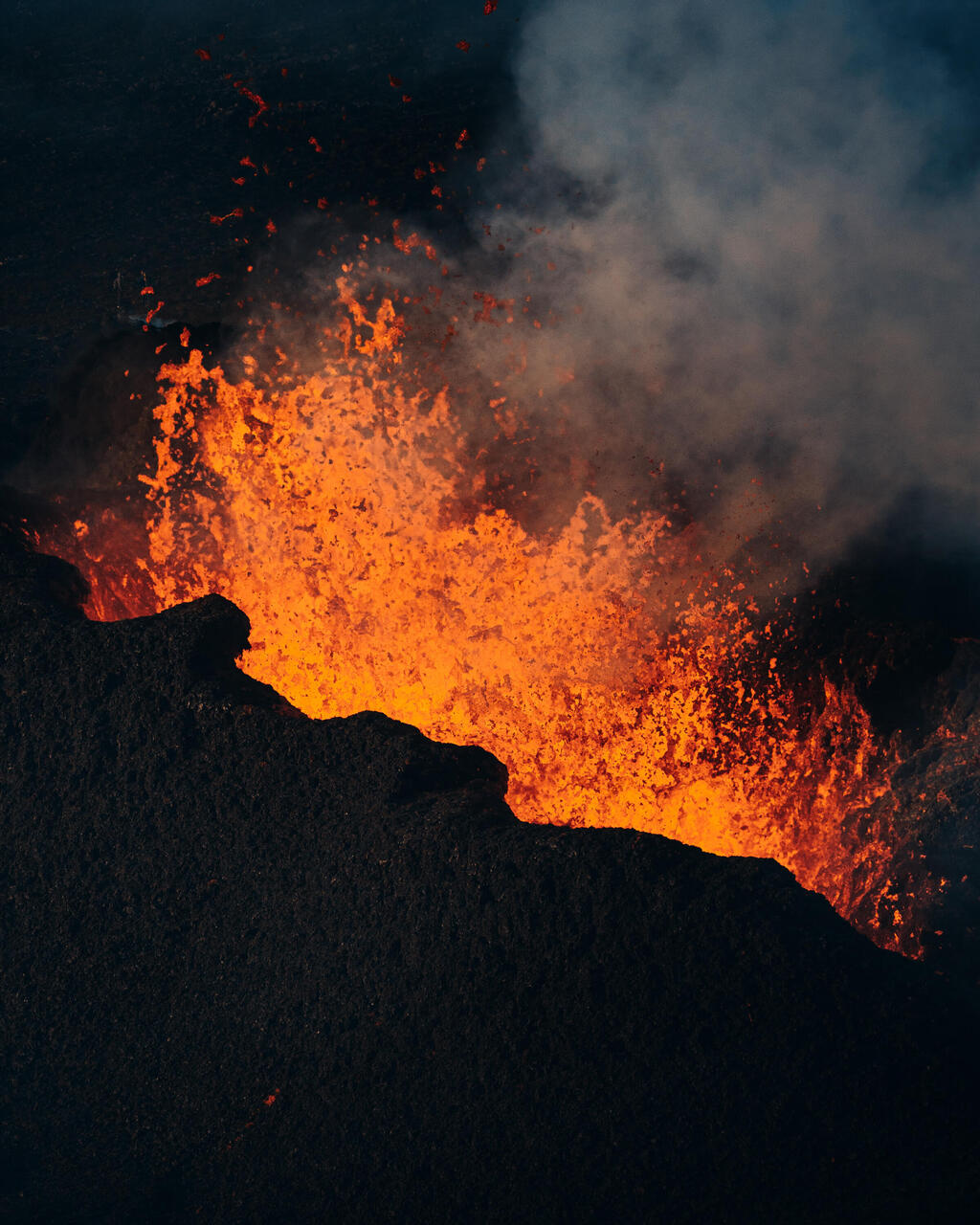Getting your Trinity Audio player ready...
Israeli photographer Idan Arad fulfilled a nature photographer’s dream last week when he documented a volcanic eruption in real time. Last week, for the third time in two years, the Fagradalsfjall volcano erupted in Iceland, just 30 away kilometers from the country’s capital Reykjavik. Arad was there with his camera and drone, capturing and documenting stunning footage.
More stories:
"There were warnings that the volcano would erupt, but no one knew exactly when it’ll happen. I flew to the Faroe Islands, which are about an hour's flight away, and when I realized that the eruption was about to happen, I decided to go back,” Arad told Ynet in an interview.
“As soon as I landed, around 4:00 pm in the afternoon, I saw reports about the eruption starting, and I knew I had to go there," he added.
"That same evening, I and a few Israeli friends who happened to be traveling in Iceland, went together to see the volcano. It was a 10-kilometer walk, and we arrived in the middle of the night.”
“Just hours after the eruption, we were among the first in the world to be there, and it was a completely surreal experience. After two days, the site was reopened to visitors, and I returned to film more footage," Arad said.
Was it dangerous?
"There’s a level of risk, it’s an active volcano, and the eruption is unpredictable. On the first evening, it was still in its early stages, and there was no designated path. There were many police forces present, and at a certain point, we were told to evacuate the area because of the presence of toxic gases. So we moved away."
"Two days later, hundreds of visitors were there because the Icelanders are very efficient and cleared a path for those wanting to visit. There were some irresponsible people who climbed close to the lava flow and were very close to the center of the eruption,” he said.
“A trip to a volcano can be safe, you just need to be alert, pay close attention to your surroundings, and know where you’re heading at all times."
Last August, the Fagradalsfjall volcano erupted, marking its second eruption in 900 years. The first in the modern era was in March 2021, and the lava flow lasted for several months, attracting hundreds of thousands of tourists who came to see the spectacle.


